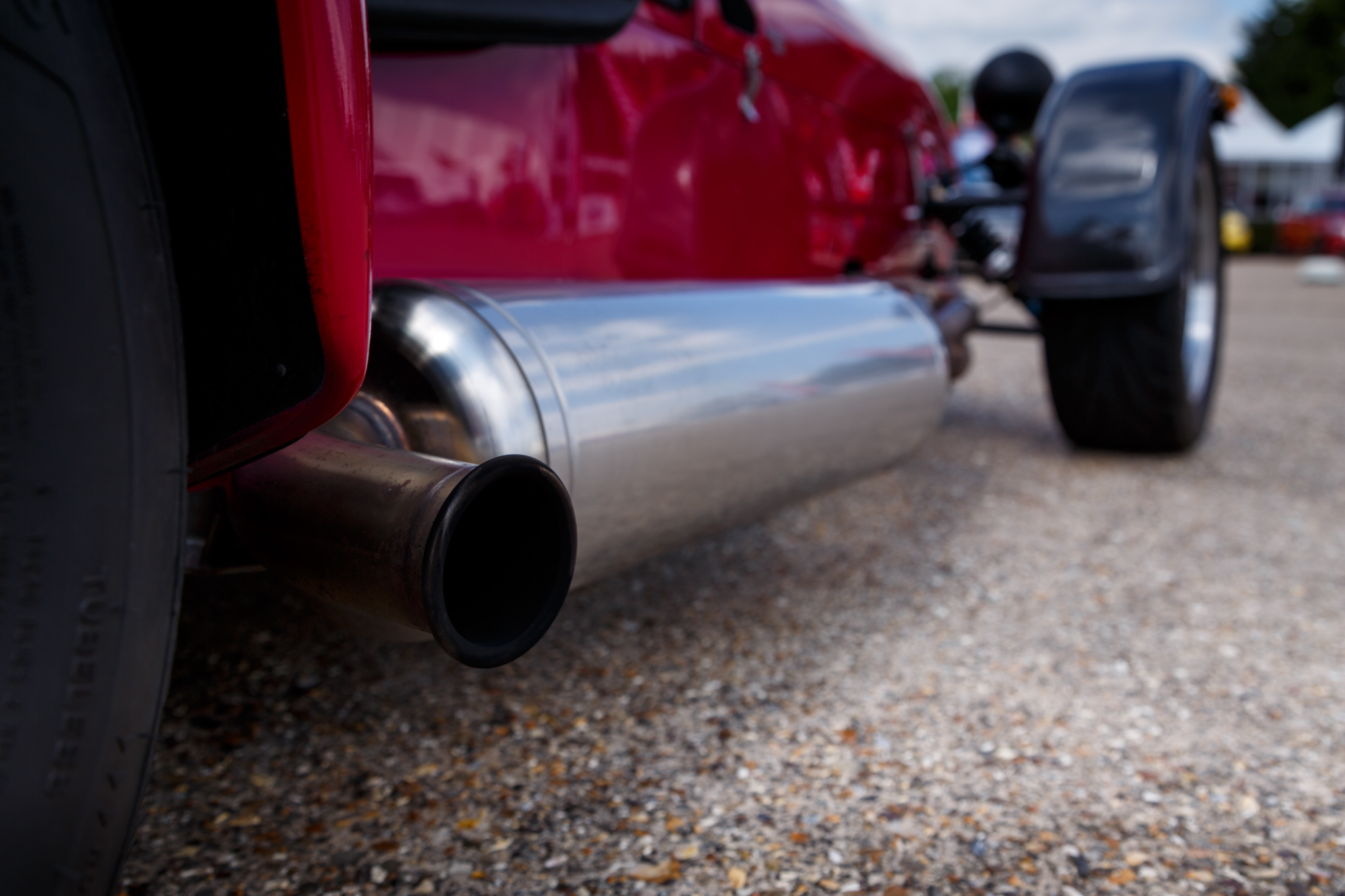Muffler delete is a popular approach to make your car sound more forceful. While it is one of the most popular methods for increasing exhaust volume, it is not the only one. The muffler is one of several crucial components in your car’s exhaust system, but it is possibly the most interesting.
This crucial component is one of the key reasons you can drive your automobile in any built-up region at all because it minimizes the otherwise tremendous noise your engine and exhaust system would make.
Despite the muffler’s evident requirement, some people choose to undertake a modification known as a “muffler delete,” but why? What is the function of the muffler in the exhaust system? Why would you “remove” it? What advantages would that provide? These and other vital questions will be the focus of this article.
Background: What Are The Main Parts Of An Exhaust System In A Car?
In a standard car’s exhaust system, there are seven primary essential components:
- Exhaust manifold
- Oxygen sensors
- Catalytic converter
- Resonators
- Exhaust pipes
- Muffler
- Tailpipe
The system checks the condition of the exhaust fumes produced by the engine, as well as the oxygen levels in the engine, to ensure that there is enough oxygen for combustion. Simultaneously, it feeds exhaust fumes into the catalytic converter, which removes the dangerous chemicals before passing them via pipes until they depart the car via the tailpipe.
It is a simplified explanation, but that is what your exhaust system accomplishes when you drive your automobile in a nutshell. But what about the muffler? What exactly does that imply?
What Exactly Is A Muffler? Also, What Is Its Function?
The muffler on your car is designed to reduce noise, as the name implies. The engine and other noises in your car are chaotic. Intake gases enter the engine, moving engine parts, combustion detonations, exhaust gases expand as they move through the car. And, of course, the sound of those four rubber tires rolling the entire vehicle along the road all contribute to the sound.
Of course, engine noise isn’t entirely terrible and useless. When driving a car with a manual gearbox, the driver needs clear audible cues to know when to shift gears. Without sound, the driver would have to rely on instinct or constantly gaze at the tachometer to see current RPMs. As a result, mufflers are primarily responsible for reducing excessive noise.
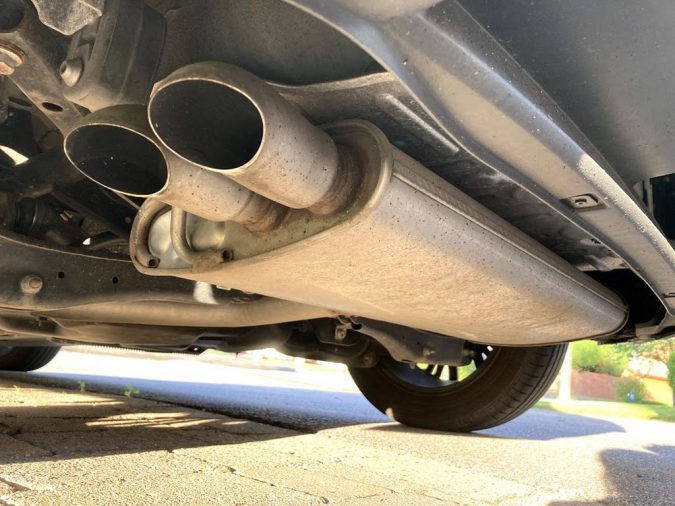
Although no internal combustion vehicle can be completely silent, the muffler makes it far more pleasant. There are two types of mufflers that minimize excessive noise to comply with city, state, and federal standards while altering certain noises to create a pleasing engine noise that buyers will enjoy. It’s more of a “harmonizer” than a noisemaker in this sense.
The Following are the Two Most Common Types of Mufflers:
Absorption Mufflers
Sometimes known as “straight-through mufflers,” it is a less restrictive type of muffler that absorbs noise into soft insulation through perforations in the pipe. Any sound that does not pass through the holes is ejected into the tailpipe.
Turbo Muffler
Noise is funneled into a specific noise chamber, where it is constantly bounding and colliding, canceling out much of the surplus noise.
The latter is the most often used by automakers since it is the most effective at assuring that any mass-produced vehicle will comply with local, state, and federal rules everywhere it is driven.
What Do You Mean By Muffler Delete?
First, let’s define a muffler delete. Muffler delete refers to the removal of your vehicle’s basic muffler from the exhaust system. To get every last bit of vibration, you’ll need to remove the silencer as well. When you remove the muffler, you’ll get a fantastic feeling every time you start the engine.
However, there are also other advantages to removing a muffler. By lowering the vehicle’s weight, you may be able to get more horsepower and enhance overall performance. Even though similar benefits can be obtained without removing the muffler, many individuals believe that removing simply the muffler is a more robust procedure.
What Are Mufflers Used For In A Car Exhaust System?
Mufflers perform a simple and easy task. They eliminate or reduce to the bare minimum the sound produced by the engine when the car is started or accelerated. The sound waves from the engine will escape via the exhaust pipe without a muffler in your car’s exhaust system, causing a loud, irritating noise.
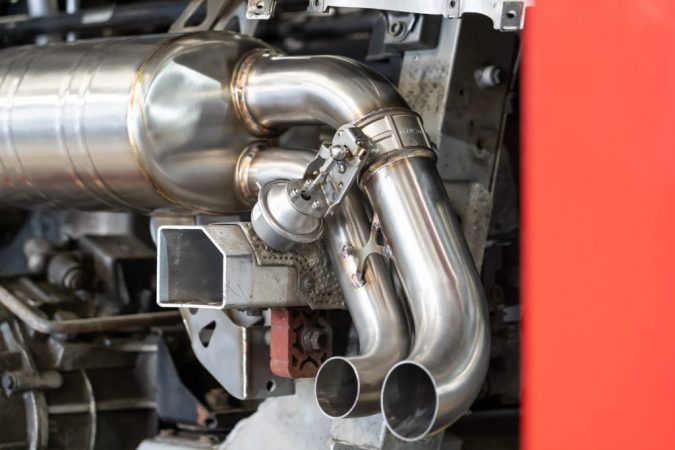
Sound waves are trapped and canceled when a muffler is connected to your car’s exhaust as they travel from the engine to the muffler section. A resonator may be used to assist the muffler.
A resonator is similar to a muffler in that its purpose is to cancel specific sound waves by causing them to collide. The addition of a muffler to your car exhaust can aid in increasing engine performance while removing one can decrease engine performance.
Is It Possible For A Muffler Delete To Ruin Your Car?
Yes and no are the answers. This isn’t intended to be confusing, but here’s why removing the muffler delete can be a good or terrible move.
Advantages Of Muffler Delete
Aggressive Sound In A Car
The majority of the time, drivers do it to make an aggressive start sound. It’s a bit of a show-off move. You might wish to demonstrate to others how forceful your car sounds at the start. The muffler’s job is to suppress the sound of the combustion engine. There’s nothing left to mask the sound once the muffler is gone.
Maximum Horsepower
Deleting or removing the muffler accomplishes two tasks at once. To begin, you are removing a component that is responsible for sound suppression in your vehicle.
The second point is that you are removing a significant component from your vehicle. As a consequence, and the engine will be able to breathe and perform better.
Cost Effective
A muffler delete is usually cost-effective when you consider the output you get. The results you may obtain for just $200 or $250 are incredible. At this price, you’ll get improved performance and a more aggressive sound.
Minimal Weight
We’ve already discussed the need for a lightweight. The weight of your car is reduced by removing the muffler. But how much is it? To what extent is this true? Based on the studies, we estimate that you can save roughly 25 pounds by reducing the weight of your vehicle. Isn’t that awesome?
Drawbacks of Muffler Delete
Increasing The Volume
Louder noise does not always meet your expectations, depending on the engine type. As a result, a cracking, rattling noise may irritate you. Moreover, when you’re stuck in traffic, then you’re in a position where you don’t like loud or unpleasant noise.
The Engine’s Performance Is Impaired
It is advantageous in older vehicles, but it does not perform well in newer vehicles. Since the ECU is the unit of measurement for all sounds, input, and losses, removing the muffler will result in a loss of engine performance and a familiarity with the check engine light. Mufflers are now engine-related, which significantly reduces noise and has fewer constraints.
Failed Emissions Test
The focus of such engine ideas is noise reduction and making the engine smooth and environmentally friendly. If a car lacks a muffler, the sensor will recognize it as a malfunction, and the automobile will fail the emissions test.
Unlawful Act
Muffler delete is prohibited conduct to execute owing to greater noise, taking into account road safety and people’s health problems. While driving in traffic, there is no guarantee you’ll be protected from the law.
Dirt Accumulation
During the muffler delete process, be cautious. There will be a lot of dirt escaping from the muffler regardless of where you cut the muffler down. And, if you’re not careful, this junk will most likely cause an issue with the vehicle’s paint.
Factors Affecting The Price Of A Muffler Delete
We’ll focus on a few factors that determine the entire cost of the muffler delete.
There are several factors to consider, including the type of vehicle, the type of muffler, neccessary maintenance, and the cost of labor.
1. Type Of Vehicle
The type of muffler ordered will be chosen based on the model and manufacture of your car before the muffler delete procedure begins. Some muffler deletes are explicitly made for certain vehicles, taking the year and model into account. This is due to the fact that the cost of replacing some pieces is higher than the cost of replacing others.
2. Muffler Types
Mufflers for common use are available in several sizes to fit a wide range of automobiles. Mufflers like this cost $25 to $50 for automobiles. A muffler for a mid-size SUV costs $50 to $100. A number of mufflers are better suited to high-end cars.
These high-performance mufflers are priced between $300 and $500. When the muffler is removed, other components typically need to be replaced. These are sold separately and do not include the muffler. You’ll need to consult an expert to establish what’s ideal for your particular situation.
3. Costs For Labor
Muffler delete rates differ by state. Furthermore, the cost of an overhaul can vary from one expert or dealer to the next. You can acquire a lot of bids for the price of muffler delete. It’s the only method to identify the most reliable companies to work with.
What Is The Procedure For Muffler Delete?
In the long run, removing the muffler can be damaging to the engine. Even if you’ve removed the muffler delete or need to reverse it, it’s simple to do. It doesn’t take much time or money; you can either get it done at a muffler shop or do it yourself using the 7 steps I’ve listed below.
1. Raise The Car
The muffler is located beneath the automobile and must be lifted. As a result, a car must be given sufficient height. Lifting can be done with a car jack. Also, put the vehicle in gear so that the tires will lock and the vehicle will not move.
2. Identify Muffler
Now locate the muffler in the vicinity of the exhaust pipe. A large chambered type box will be attached to the pipe. It could be welded, clamped with an exhaust clamp, or attached with a flange.
3. Unscrew Clamp For Mufflers
The muffler is connected to the pipes near the axle using a muffler exhaust clamp. A muffler clamp is a less expensive solution for permanently fastening your muffler if you don’t want to weld. If you have a welded pipe, use an exhaust chain cutter pipe to cut off the pipe that is attached.
4. Taking Out The Muffler
Now you can easily remove the muffler. Use a hammer to strike the clamps if moisture or rust is formed due to heat and the bolts have tightened. The pressure from the screws will be released.
5. Fabricated Pipe Installation
When you delete the muffler, you always use a fabricated pipe to replace it. Because if you keep the cut-off hose open, the fuel tank will be affected, causing problems. When selecting a fabricated pipe, ensure that the diameter matches the muffler inlet and exit. If you’re unsure about the quality, then a stainless-steel fabrication pipe is a good option.
6. Use A Loud Exhaust Tip
When you’re removing a muffler, using the best exhaust tip for deep sound (optional) is a must.
These tips not only produce a louder sound but also offer the automobile a crisp appearance from behind. The Borla 248 Angled-Cut exhaust tip has a stainless steel quality and an aggressive appearance, and it can be used for a deeper sound.
7. Tighten All Of The Bolts On The Exhaust Hanger
When you’re finished, connect the fabricated pipe to the exhaust tip all the way around.
You can connect the inner side of the pipe to the exhaust hanger using a new exhaust clamp.
Tighten all of the necessary bolts and screws with the help of handy tools.
Now go ahead and drive the vehicle!!
Is It Possible To Reverse The Muffler Delete?
Yes, if you later realize that wasn’t the best decision for you, you can undo it. However, removing it could cost you more than you paid to have it removed. As a result, think about it before removing the muffler. Mufflers are an integral part of every car’s exhaust system in general.
Is It Legal To Do Muffler Delete?
Regardless of where you live, removing the muffler from a vehicle traveling on public highways is illegal. It’s a common misconception that as long as your car noise is under the limitations of your state or local noise laws, you’ll be good. This simply isn’t the case.
While a muffler delete can get you a ticket, you’re more likely to get a ticket for excessive vehicle noise than for the muffler delete. If a knowledgeable cop pulls you over, though, there’s a considerable chance you’ll get multiple tickets.
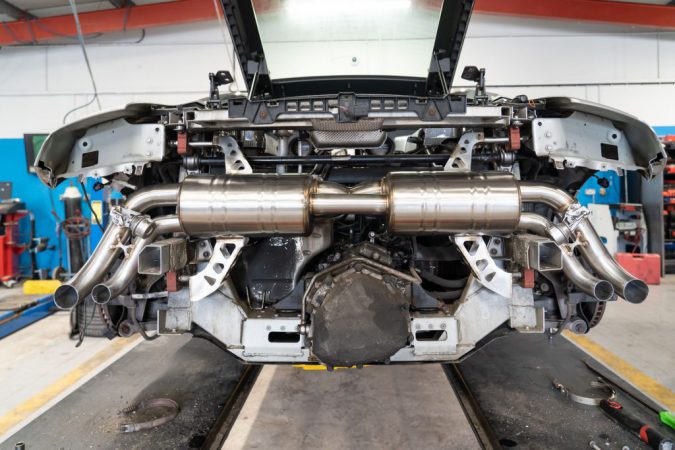
What’s The Difference Between A Straight-Through Exhaust System And A Muffler Delete?
A straight pipe exhaust system consists of a single pipe that travels from the header to the back of the car without the use of a muffler. These exhaust systems, which are usually found in racing cars, do not impede gas flow. Muffler delete and straight through exhaust systems essentially produce the same results.
On the other hand, a muffler delete entails the removal of an actual muffler from the car. If you want to remove your vehicle’s muffler, a muffler delete is a more cost-effective option than installing a straight pipe exhaust system.
Another benefit of a muffler delete versus a straight-through exhaust system installation is that you can always restore the muffler if you change your mind about the delete. Otherwise, the straight-through exhaust system would have to be dismantled and replaced with one that included a muffler.
Can A Muffler Delete Pass Emissions?
There is no way! A car that has had its muffler deleted will fail a routine inspection. However, if you’re wondering if deleting a muffler will raise emissions, the answer is clearly no. The muffler’s main purpose is to reduce noise; it does not reduce pollution or control emissions.
Muffler Delete Vs. Resonator Delete
Another way to increase vehicle noise while keeping your muffler intact is to remove the resonator. A resonator isn’t found in every vehicle, but if yours does, it’s another method to enhance noise without changing the muffler.
However, if you want to remove the resonator rather than the muffler to stay on the legal side of the law, you’re out of luck. Resonator deletes, like muffler deletes, are banned in most states.
What Is The Cost Of A Muffler Delete?
If you’re considering a muffler delete, you’ll be shocked at how affordable it is. The components themselves are usually between $50 and $250. Meanwhile, if you need a technician to do the job, it will only cost you between $100 and $200.
However, because muffler delete is banned on automobiles that will be driven on public roads, you may have a harder time finding a repairman who is willing to execute the job.
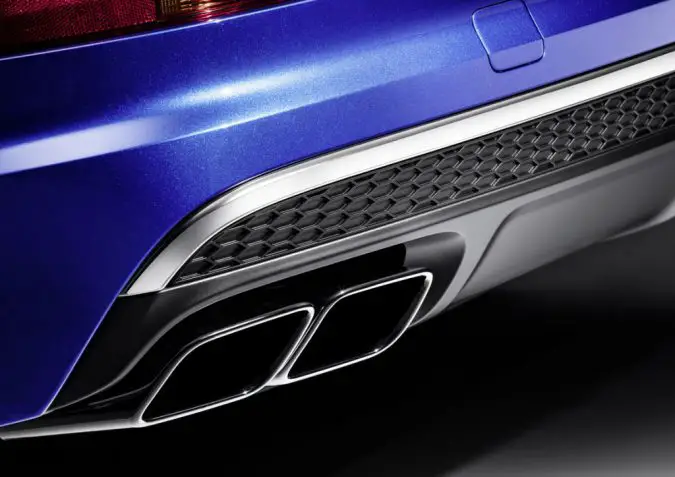
Facts about Mufflers and Exhaust Systems:
- Mufflers provide a sound-dampening function for the entire automobile’s exhaust system, muffling the noise created by the heat and vibration of an internal combustion engine.
- Newer model mufflers are sleeker, more durable, and more efficient than ever.
- A muffler delete is a process that removes the device from the exhaust system for various reasons.
- A muffler delete involves having an actual muffler removed from the vehicle, and a muffler delete pipe installed in its place, and an exhaust tip is welded to the end.
- Removing a muffler in the past offered benefits to a vehicle owner concerned with performance, but modern vehicles are designed to be less restrictive, and muffler deletes mainly increase the volume of the vehicle.
- Straight pipe exhaust systems yield the exact same results as a muffler delete, but a muffler delete is a more cost-efficient choice than having a straight pipe exhaust system installed if your vehicle already has a muffler.
- A muffler delete can be easily reversed, while a straight-through exhaust system would have to be removed and replaced with a muffler.
- A muffler delete does not increase emissions at all, and the actual removal of the muffler does not interfere with any smog equipment installed on the vehicle.
- Louder exhausts can be a contentious issue, but as long as the vehicle doesn’t exceed the legal decibel limit for sound pollution, there are no issues with local bylaws.
- It is essential to consult with local regulations before undertaking any vehicle modification.
Frequently Asked Questions: How To Do Muffler Delete?
It’s not easy to remove the muffler because there are so many elements, including resonators, catalytic converters, and other components. There are some concerns about the cost and length of time it will take to remove it. Let’s go through the most common questions asked.
1. How Much Does It Cost For Muffler Delete?
Ans: It is usually from $50 to $250. If you undertake a do-it-yourself muffler removal at home, the aftermarket parts will cost between $50 and $70. On the other hand, if you hire a professional from a muffler repair business to conduct the job, you may expect to pay between $100 and $250.
2. How Long Does It Take For A Muffler Delete?
Ans: It will take about 2 hours to complete this task. Whether you hire a professional or do the work yourself. It takes about 2-2.5 hours to replace it with a fabricated steel pipe.
3. Is It True That A Muffler Delete Makes Your Automobile Louder?
Ans: Yes. The car becomes louder after muffler delete. It does, however, have some disadvantages. You will eventually experience extreme noise concerns as a result of the unstable exhaust engine. An exhaust tip or a decent sound muffler is always recommended if you need a deeper sound.
4. Is It True That Muffler Delete Reduces Gas Mileage?
Ans: No. The muffler delete has no effect on gas mileage. A muffler is a sound-dampening device used to reduce the volume of sound waves generated by combustion. Don’t worry if you’re researching it before going ahead and doing it; removing the muffler will not affect your gas mileage.
5. Is A Muffler Delete Reversible?
Ans: You would definitely remove the muffler and replace it with more exhaust piping if you had a muffler delete. To reverse the muffler, you’ll need to re-cut the exhaust piping to create room for your muffle.
6. Is It Better To Take Out The Muffler Or The Resonator?
Ans: The muffler delete is the thing to go if you desire a lighter and louder vehicle. The resonator delete is a great option if you want a good sound and a little more power.
7. What Is The Purpose Of A Muffler?
Ans: Its main purpose is to lower the amount of noise generated by an internal combustion engine. A loud sound is produced when a muffler is used from the exhaust. In most cases, the formula is used in a racing car. Racers dislike silencers on race cars. As a result, they remove the muffler to make the exhaust sound louder.
You may be perplexed as to how muffler delete boosts horsepower. It’s because removing the muffler causes the vehicle to lose weight and allows the engine to breathe a bit better. When the muffler is removed, the car’s additional vibration and heat are also reduced.
Final Verdict:
The most significant advantage of muffler delete is that the vehicle’s sound will be louder. In certain circumstances, you may even notice a little increase in horsepower. However, this is not a significant component in making a decision. Furthermore, you must keep in mind that you must also deal with the legislation, as muffler delete is illegal. You’ve come to learn everything there is to know about muffler delete.

